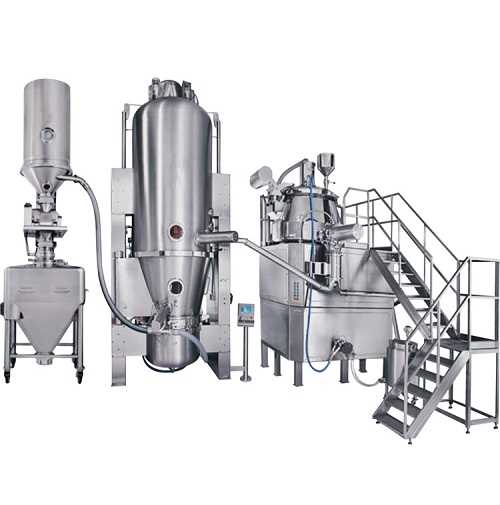Pharmaceutical Oral Solid Dosage Granulation Process
Granulation is a critical process in the manufacturing of oral solid dosage forms like tablets and capsules. It involves transforming fine powders into larger, free-flowing particles called granules. This process ensures uniformity, improved compressibility, and enhanced stability of the final product.
Types of Granulation

-
Wet Granulation:
-
Process: Involves adding a liquid binder to the powder bed, allowing particles to adhere and form granules.
-
Advantages:
-
Uniform distribution of active pharmaceutical ingredients (APIs).
-
Improved flowability and compressibility.
-
Enhanced dissolution rates and bioavailability.
-
Reduced dust formation.
-
-
Disadvantages:
-
Complex and time-intensive.
-
Not suitable for hydro-sensitive or thermolabile APIs.
-
Higher production costs and large facility requirements.
-
-
-
Dry Granulation:
-
Process: Involves compacting the powder mixture without the use of a liquid binder, followed by milling to form granules.
-
Advantages:
-
Suitable for moisture and heat-sensitive APIs.
-
Simpler and less time-consuming compared to wet granulation.
-
-
Disadvantages:
-
May result in less uniform granules.
-
Limited to APIs with sufficient cohesive properties.
-
-
Granulation Methods
-
High Shear Granulation:
-
Uses high-speed mixers with impellers and choppers to produce dense granules.
-
Suitable for a wide range of formulations.
-
-
Fluid Bed Granulation:
-
Involves spraying a binder solution onto the powder bed while fluidizing the particles with air.
-
Produces highly uniform granules with excellent flow properties.
-
-
Roller Compaction:
-
A dry granulation method where powder is compacted between two rollers to form ribbons, which are then milled into granules.
-
Ideal for moisture-sensitive APIs.
-
Key Considerations
-
Particle Size and Morphology: Affects the blending process and homogeneity of the drug substance in the blend.
-
Dosage Strength and Drug Loading: Influences the critical processing parameters (CPPs) and critical quality attributes (CQAs) of the final product.
-
Blending: A critical process that must be optimized to ensure the potency and uniformity of the finished product.
